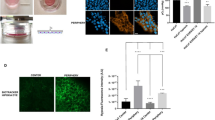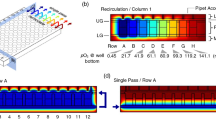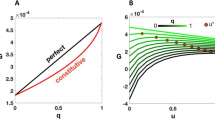Abstract
A simple technique for maintaining low oxygen concentrations (0.1-20%) is described. These conditions were then used to study the effect of oxygen on colony growth of neoplastic cells in soft-agar. Physiologically low oxygen concentrations (0.1-10%) compared to 20% O2 were found to enhance plating efficiency and colony size of tumour cells. The optimal oxygen concentration for plating efficiency varied with tumour studied and may be as low as 0.1%. Having established that tumour cell colonies will grow better at 0.1-10% O2 compared to 20% O2, the mechanism by which this enhancement occurs was investigated. Observations on the effect of free radical scavengers and superoxide dismutase on plating efficiency of Ehrlich's ascites tumour cells suggests that this phenomenon occurs through oxygen toxicity mediated by superoxide anion.
This is a preview of subscription content, access via your institution
Access options
Subscribe to this journal
Receive 24 print issues and online access
$259.00 per year
only $10.79 per issue
Buy this article
- Purchase on Springer Link
- Instant access to full article PDF
Prices may be subject to local taxes which are calculated during checkout
Similar content being viewed by others
Rights and permissions
About this article
Cite this article
Gupta, V., Eberle, R. Modulation of tumour cell colony growth in soft agar by oxygen and its mechanism. Br J Cancer 49, 587–593 (1984). https://doi.org/10.1038/bjc.1984.93
Issue Date:
DOI: https://doi.org/10.1038/bjc.1984.93



